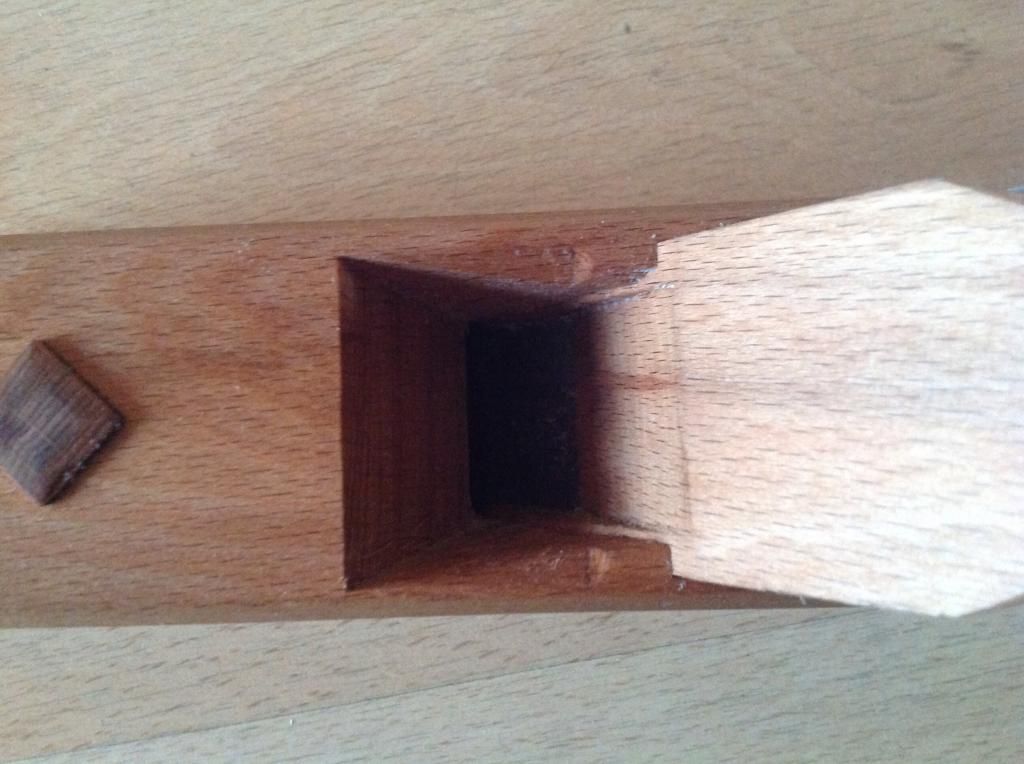J_SAMa
Established Member
I have just finished making my single-iron, 18th century-style plane. Having never used a plane that's alike I've got no benchmark to gauge its performance against. The main problem here is that whenever I take a shaving thinner than say 3 thou, I get a sensation that the iron is trying to come out of the cut, as if it's not sharp or has not enough clearance. It's the same no matter how I sharpen the iron. It works better if I press down on the plane, but that gets tiring after a while. The sole is perfectly flat (or at least as flat as all my Bailey planes), and as far as I can test with candle soot, the bed is well fitted to the iron at the top and bottom, same for the wedge and abutments.
Is it simply due to the wooden plane's lightweight? Or is it because single irons somehow don't pull themselves to task as much as double irons do? And in case it's relevant, the iron is 3 mm thick HSS, sharpened with a camber so that the center projects about 1 mm deeper when it is in the plane.
Edit: plane is bedded at 50 degrees.
Any input is appreciated
----------------------------------------------------------------------------------------------------
UPDATE:
Well technically I only checked for STRAIGHTNESS of the sole, forgot to check for WIND #-o. Reflattened it and now it works fine. Can even take thin shavings like a smoother.
Bed flatness, sharpness and all that other stuff had nothing to do with it.
-----------------------------------------------------------------------------------------------
Pics:
Too rough to be "showing off" (only my second attempt) but here it is...

Couldn't for the life of me plane that black line at the toe out. Looks even worse in flesh. Probably some sort of drying defect.
What bothered me the most was actually the carved finishing touches, like the eyes and vertical chamfer stops. Really difficult to get them looking identical.

Best looking one out of all 4. Not gonna show the other 3.

S/O to Mr. Caleb James for the plan:
http://kapeldesigns.blogspot.nl/2013/10 ... -18th.html
Sam
Is it simply due to the wooden plane's lightweight? Or is it because single irons somehow don't pull themselves to task as much as double irons do? And in case it's relevant, the iron is 3 mm thick HSS, sharpened with a camber so that the center projects about 1 mm deeper when it is in the plane.
Edit: plane is bedded at 50 degrees.
Any input is appreciated
----------------------------------------------------------------------------------------------------
UPDATE:
Well technically I only checked for STRAIGHTNESS of the sole, forgot to check for WIND #-o. Reflattened it and now it works fine. Can even take thin shavings like a smoother.
Bed flatness, sharpness and all that other stuff had nothing to do with it.
-----------------------------------------------------------------------------------------------
Pics:
Too rough to be "showing off" (only my second attempt) but here it is...

Couldn't for the life of me plane that black line at the toe out. Looks even worse in flesh. Probably some sort of drying defect.
What bothered me the most was actually the carved finishing touches, like the eyes and vertical chamfer stops. Really difficult to get them looking identical.

Best looking one out of all 4. Not gonna show the other 3.

S/O to Mr. Caleb James for the plan:
http://kapeldesigns.blogspot.nl/2013/10 ... -18th.html
Sam
































